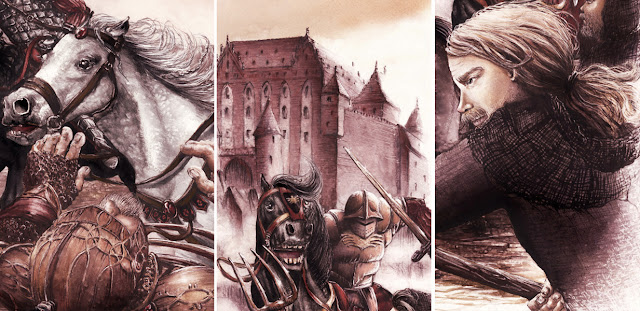"Expanding
Comfort Zone" part...next. One of the most
important aspects of a good portfolio is showing an ability to draw various
themes (do not confuse with variety of styles!). When browsing through my old
portfolio I encountered medieval buildings, steampunk buildings, fantasy buildings and
some existing buildings. In short - it was quite monothematic. Ok, maybe I'm
exaggerating. There were also guitars. Still, it was quite far from presenting
diversity of themes.
My portfolio needed more people, more
animals and more dynamism (nope, torn Ghost Ship's sails flapping on the wind don't really count as
"dynamic"). How about a battle scene? It usually requires participation of a group of people, right? Dynamism is also automatically
incorporated. Let's add animals in the form of horses and we will have a
complete package.
1. Tadaaaa:
Not oh-so impressive, I know. Luckily it's
just my 2-minutes chaotic sketch. Hopefully the final result will be a little
bit better.
2. Detailed pencil drawing. The more details
are drawn with an easy-to-erase pencil, the less decisions need to be made
during the watercolor part:
3. The background. It's almost invisible, but
I prefer to keep it very delicate at this stage. Probably after painting these
fighting guys, I'll add more contrasts or details to the background. In case of
watercolors adding it's always easier than withdrawing.
4. The fighting guys and their brave steeds,
stage 1. Tiny little details will be added later.
5. The fighting guys and their brave steeds,
stage 2. Tiny little details were made with brown and white opaque ink. 

As suspected also the background needed
further treatment to form a coherent whole with the characters. New layers of
warmer colors were added to the sky, the castle and the rest of the
environment.
And they lived happily ever after...
































